For fans designed to be used on a radiator we really need to test the fan on the radiator and measure the performance. The key metrics of interest are airflow and noise. Airflow can be measured by using an Anemometer, or it can be measured by seeing the effect it has on cooling a radiator. For this test we used both methods.
fast_fate used his awesome temperature chamber used in the Radiator Round Up to compare one set of Vardars to the AP15s he normally tests radiators with. He ran the same radiator tests he would normally run on two different radiators but with the Vardars in addition. The two radiators chosen were of reasonably high air restriction – The Koolance HX-CU with it’s 20 FPI and decently thick core would task the static pressure, while the HardwareLabs with it’s large core but lower FPI would provide a more middle ground comparison.
As fans don’t necessarily get up to full speed when loaded with a restrictive radiator both sets of fans were overvolted as necessary to acheive the rated 1850RPM. It should be noted that the Vardars needed more voltage than the AP15s in all cases.
fast_fate tested both “push” and “push/pull” fan setups – and in both cases the Red/Pink AP15 fans dissipated more heat than the Blue Vardar fans by about 5-10%. This was repeated itself with the SR2 radiator:
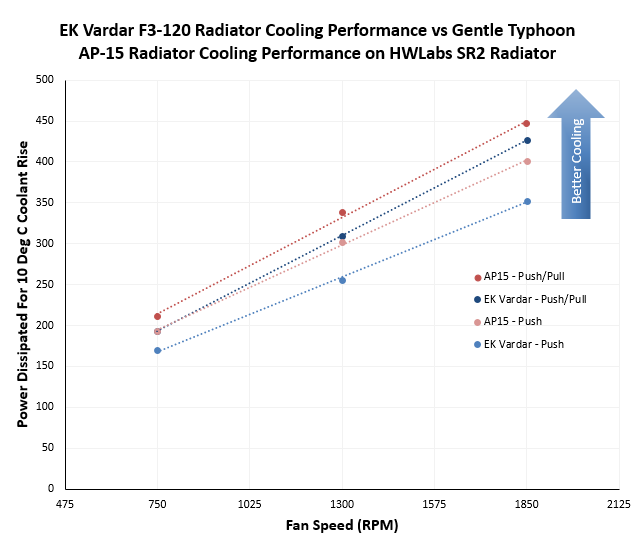 After seeing this data I suspected maybe something was strange so I dug out my Anemometer to check my personal set of Vardar fans which were on a different continent to fast_fates. After all, maybe it was just a bad batch? For comparison although I had some AP15s, I decided instead to use some fresh virginal AP16s for comparison. The AP16 simply pushes up to 2150RPM but is in all other respects identical. I also included Alphacool’s new “Susurro” 1700RPM fan as another datapoint. For these tests EK’s own PE radiator was used with two fans mounted in push.
After seeing this data I suspected maybe something was strange so I dug out my Anemometer to check my personal set of Vardar fans which were on a different continent to fast_fates. After all, maybe it was just a bad batch? For comparison although I had some AP15s, I decided instead to use some fresh virginal AP16s for comparison. The AP16 simply pushes up to 2150RPM but is in all other respects identical. I also included Alphacool’s new “Susurro” 1700RPM fan as another datapoint. For these tests EK’s own PE radiator was used with two fans mounted in push.
If you want to take a look at the original data – you can find it here. The fan speed was controlled by an Aquaero 6 in voltage mode for the 3 pin fans, but PWM mode for the Vardar. At each fan speed 5 noise measurements were taken corresponding to 45 degree increments from intake to exhaust. The results are shown here:
It should be noted that the noisefloor is about 32-33dBA. At these volumes I have to hold my breath and turn off any moving parts (pumps/fans) in the room and close all doors and windows.
This plot clearly shows that for the same RPMs that the Vardar is louder than the Gentle Typhoon, and that the Susurro is louder still. What’s not clear on the plot though is that the Vardar doesn’t hit 1850RPM – instead it hit about 1794 RPM, this is a good bit lower than the AP15 which typically hits 1830-1845 RPM.
So the Vardar is louder than the AP15 – but what about airflow?
Again the same pattern holds here – the Vardar at the same RPMs is not able to put as much air through a radiator. This means that it will not cool down the coolant in a radiator as well as the AP15 would. Again at the high end, the Susurro is again behind the Vardar.
However fan speed is really irrelevant – it’s simply a means to an end. What we really want to know is how much airflow do you get vs noise?
This plot clearly shows then to get the same airflow through a radiator that the Vardar simply makes more noise than the Gentle Typhoon. It does at least beat the Alphacool Susurro though so it’s clearly not a complete loss.
On to the summary!








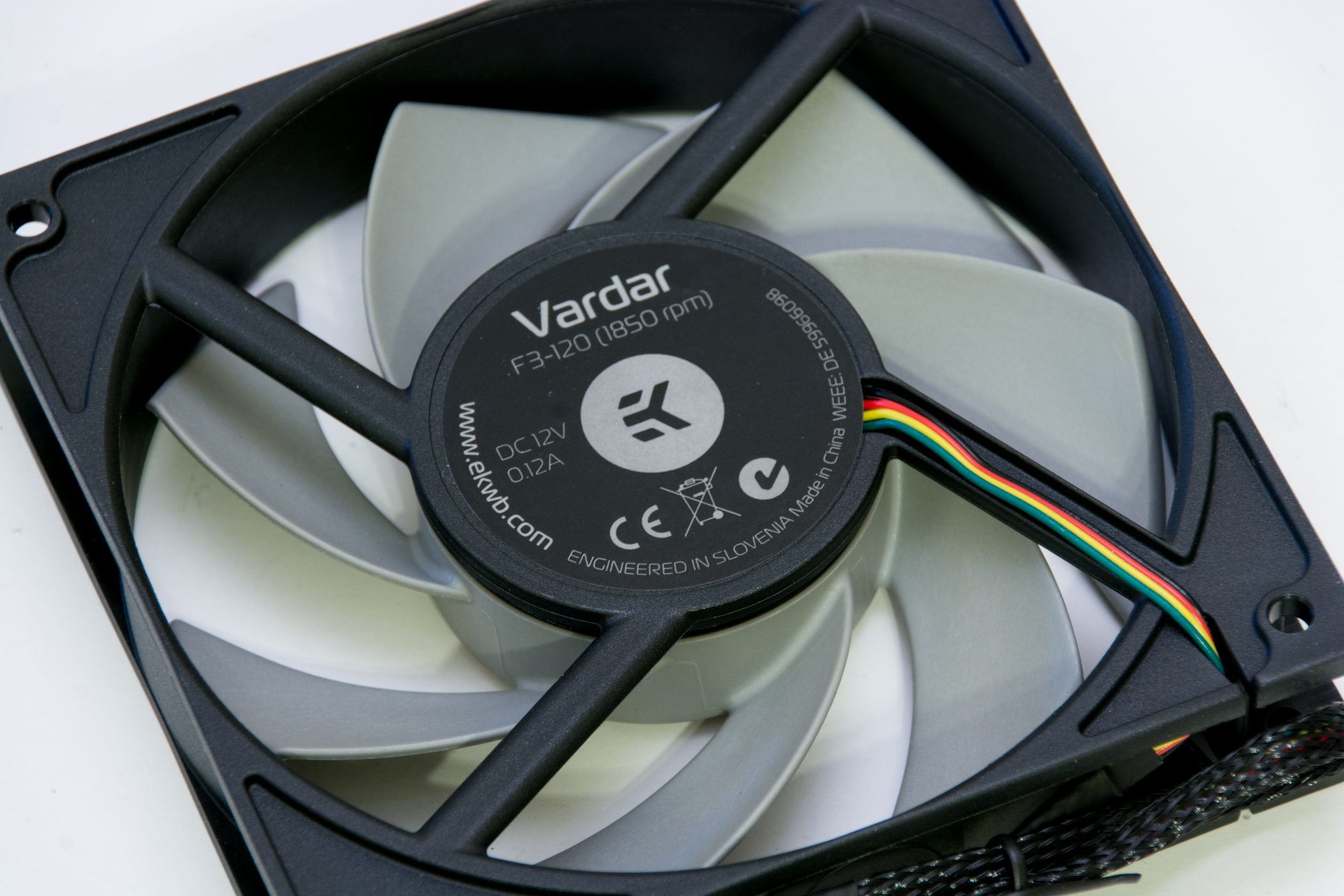
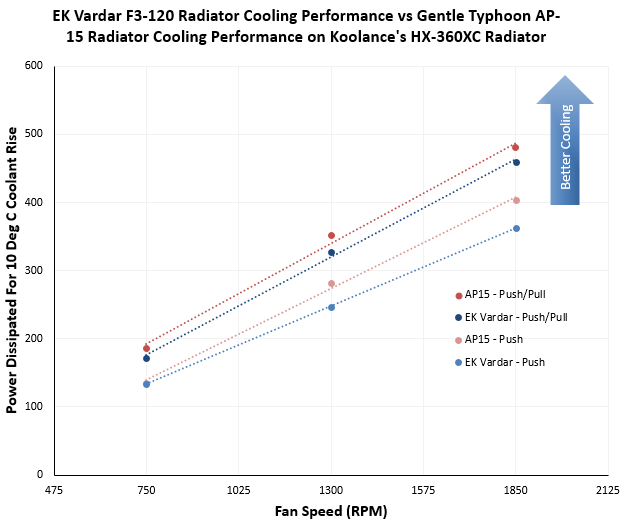
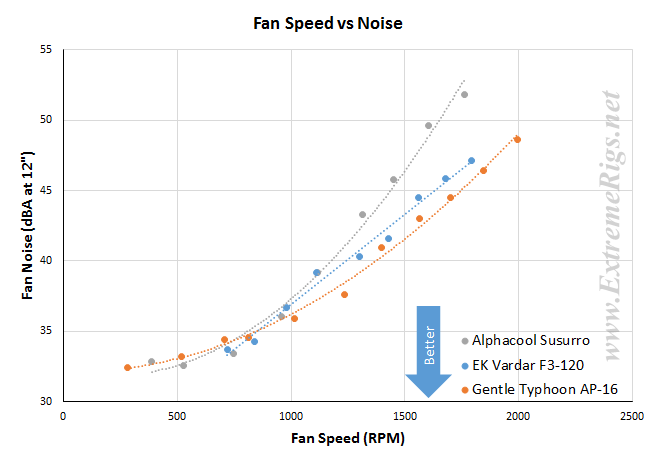
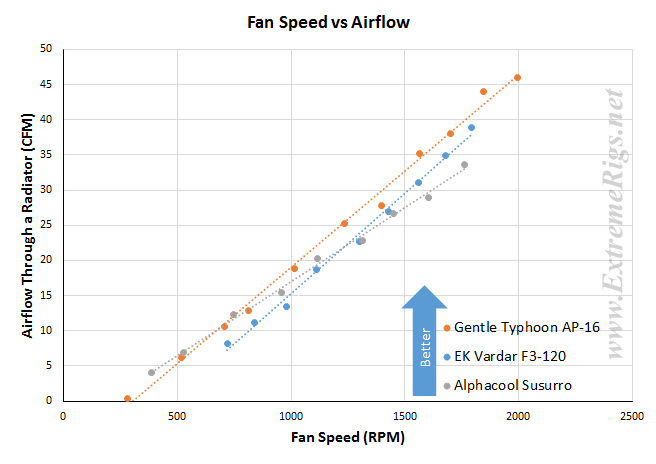
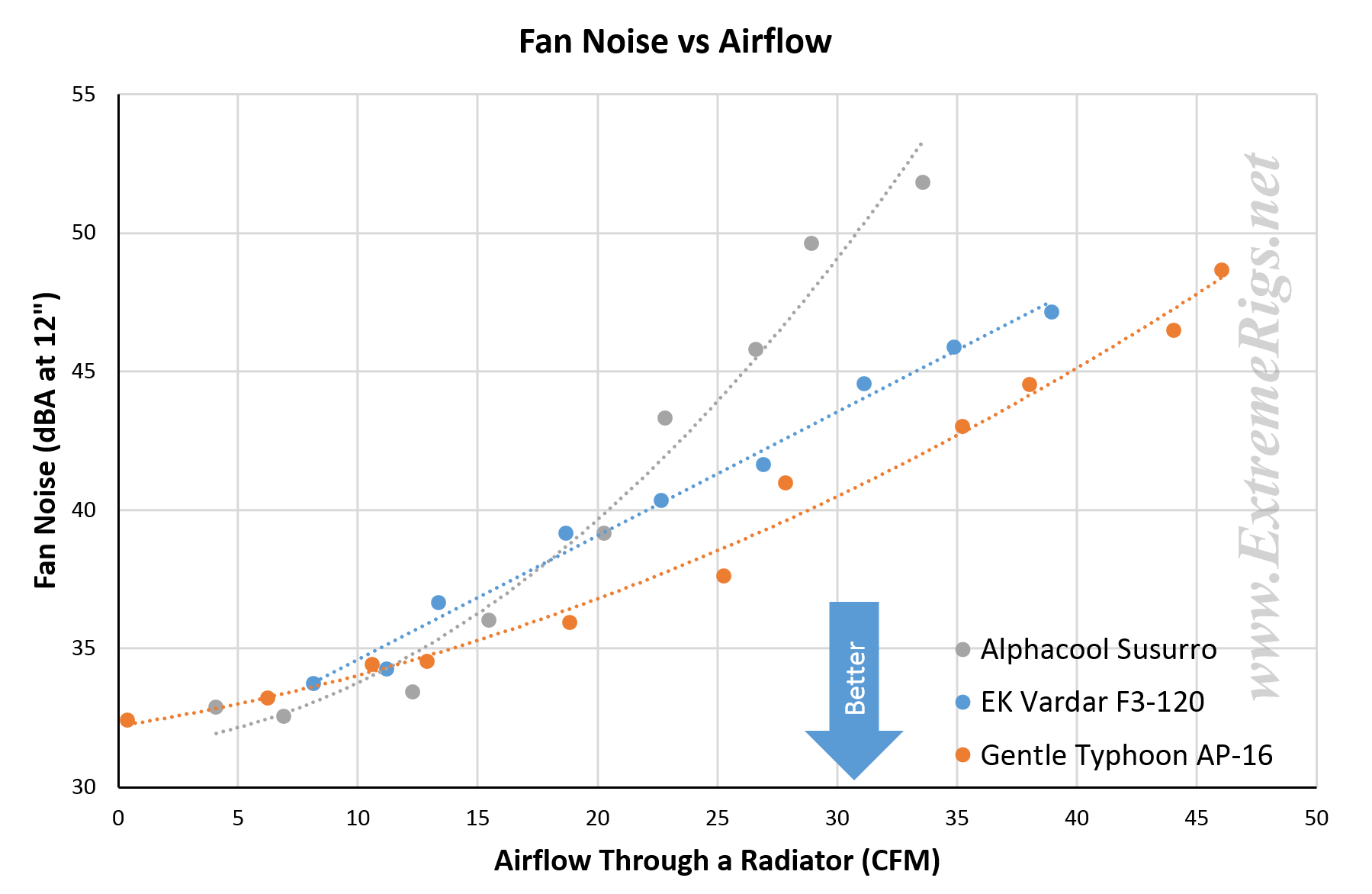



[…] specifically the Vardar F4-120. Stren of Xtremerigs.net fame was kind enough to host the article there and EKWB thought it was good enough to be included in their press release. Now with the retail […]
Excellent review! I was wondering if you have any plans at looking at the performance of some of the Noctua fans, like the NF-S12A
[…] out our EK Vardar F3 review where we put the Vardar and Gentle Typhoon head to head against one […]
[…] an ER (Extended Range) version of the F4-120 (2200 RPM) model. I already had some of the original Vardar F4-120 and having recently received some of the F4-120ER I am now able to compare the two and share my […]
these fans are very noisy avoid them
Comments are closed.